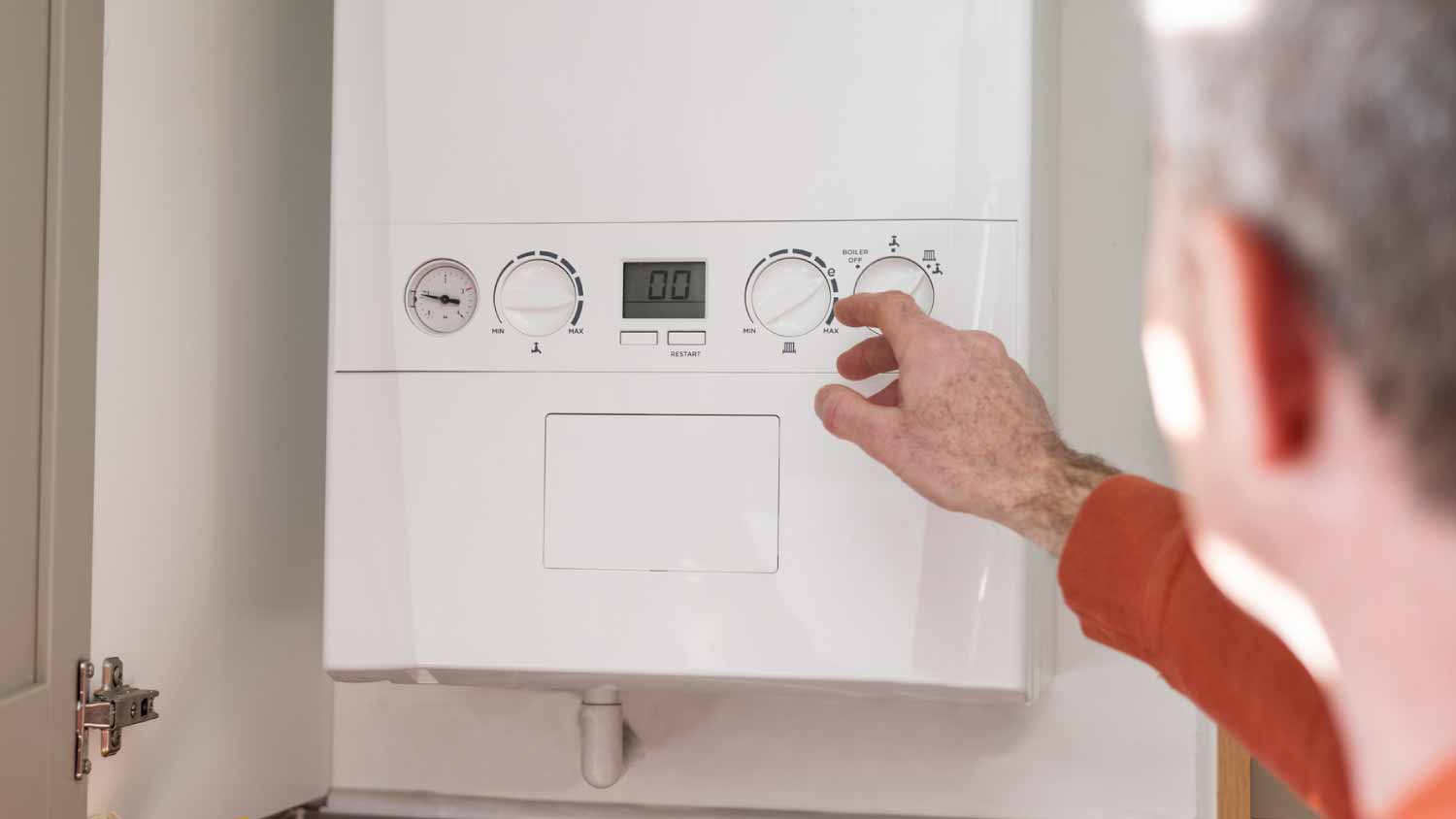
Discover the true window AC unit installation cost to learn about labor, permits, and ways to save on your window AC project.
Keeping your heat running this winter just requires a little elbow grease


If your home uses radiators for heat, you have an oil or gas boiler that needs regular maintenance. Soot builds up inside a boiler over time, causing serious problems if left unchecked. You should clean your boiler every year before winter to ensure it doesn't break and cause you to lose heat. Learn how to clean a boiler with this simple step-by-step guide.
Air duct cleaning takes an average of five to seven hours for most households. You can make the job go quicker by removing any obstacles around your HVAC entry points, like furniture, to make it easier for your pro to access the ducts.

Before you take the boiler apart, ensure your safety from electrocution or fire by turning off its electrical power and fuel supply.
The electrical power supply is on the boiler's main red switch plate, often located at the top of the basement stairs or near the boiler.
The fuel shutoff valve will either be near the oil tank for an oil boiler or near the incoming gas pipe for a gas boiler.
With both supplies shut off, disconnect the power and fuel lines from the boiler. Place the fuel line in a spare container, such as a bucket or pan, to catch any potential drips from the line.

Allow the boiler to cool until it's no longer hot to the touch. This may take three hours. Once it's cool, open the vent with a screwdriver and remove the nut on the combustion chamber door with a wrench. You’ll find the combustion chamber door on the front of the boiler. Place the nut somewhere secure so you can locate it easily when it's time to reassemble the boiler.
Use a wire brush to scrape soot from the walls of the combustion chamber. Soot is a byproduct of fuel and air mixing. It can be tough, and buildup can cause the chamber walls to corrode. A wire brush is strong enough to loosen any soot.
Once the walls are soot-free, use an industrial shop vac to remove the debris.
This step is only necessary if you have an oil-powered boiler. Oil air filters trap impurities that would otherwise clog the oil-burning nozzle, cause a misfire, and shut down the system.
Close the oil valve, unscrew the oil filter, and swap it out for a new, clean one. Follow your local hazardous waste disposal regulations to get rid of the old filter.

Close the combustion chamber door and put the nut back on, tightening it with your wrench until it’s firmly in place. If you detached the power and fuel lines, you can now reattach them and turn the electrical power and fuel supplies back on.
Leave the fuel valve open with your container underneath until the fuel starts flowing. This will allow any air trapped in the line to escape. Once fuel starts flowing, you can close the fuel valve and remove your container.
Boiler cleaning is a relatively simple DIY involving minimal supplies if you already own the tools. You'll pay about $35 for a replacement oil air filter and only about $25 to rent a shop vac for a few hours. However, some homeowners prefer to hire a local boiler pro.
Professional boiler cleaning costs $150 to $350. You can also pay the$200 to $500 cost for full boiler service, which includes cleaning, inspection, repair, hard water descaling, and replacement of worn-out parts. A certified HVAC pro must clean certain boiler system parts, such as the burners, coils, draft hood, and chimney.
From average costs to expert advice, get all the answers you need to get your job done.

Discover the true window AC unit installation cost to learn about labor, permits, and ways to save on your window AC project.

Whole-house humidifier costs vary based on the type and size of the unit, along with other factors. The price might be worth it for people living in dry regions.

When your HVAC system is acting up, it could be the blower motor to blame. See how much blower motor replacement costs and what impacts the price here.

Are you considering adding a whole-house humidifier to your home? Keep reading to learn the pros and cons of a whole-house humidifier.

Don't get left out in the cold. These warning signs can help you determine whether you need to replace your heating system to keep you cozy all season long.
How to clean your air conditioner depends on the unit type. Sometimes, a good hose-down is all you need if you have centralized AC. This guide can help with the cleaning process.